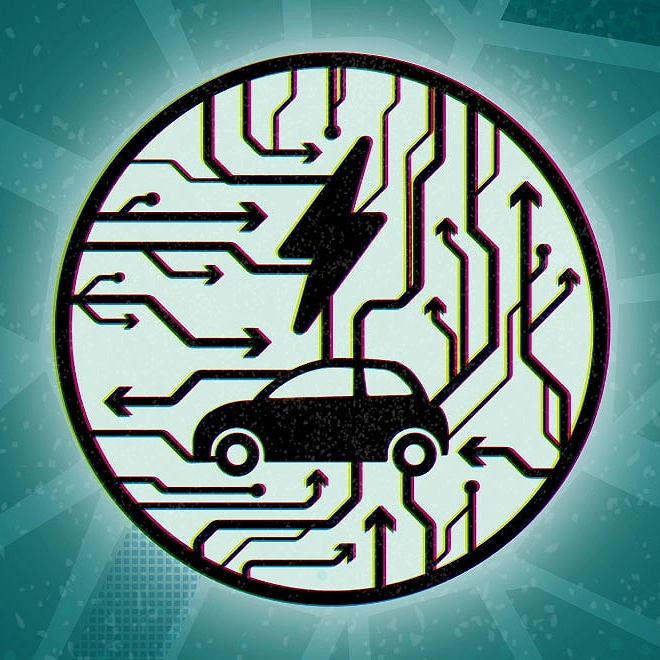E-bikes merge into the fast lane
They’re eco-friendly, COVID-safe, and often faster than mass transit. That’s why sales of electric bicycles in North America and Europe have nearly doubled since 2018.

Health-related benefits and distinct features are fueling e-bike sales, creating opportunities for technology and telecom companies.
Before the pandemic, the main appeal of electric bikes (e-bikes) was lower-impact exercise. Pedal when you want to; use the motor for hills. Now, sales are surging as riders embrace a single-person mode of transportation that helps them save fuel while avoiding crowds and traffic.
Deloitte analysis reveals that annual e-bike sales in North America and Europe (combined total) nearly doubled from 2018 to reach an estimated 6.4 million in 2021.1 During 2020–21, even as the pandemic affected consumer vehicle sales globally2 and transit ridership fell 73% in the United States,3 total e-bike sales in the country grew 26% year over year and 22% in Europe.
In 2019, Deloitte predicted strong growth globally for e-bikes during 2020–2022, as they presented a faster, easier, and healthier option for commuting.4 Motorized “assistance” also made cycling more accessible for individuals with physical limitations (from disability or age), as batteries reduce or remove the need to pedal.5 In the wake of COVID-19, factors such as personal health, well-being, and social distancing have likely made e-bikes even more attractive.6
Besides health and safety reasons, consumers have shown more interest in buying their own means of transport mainly to cut personal commute time, especially over short distances. According to a 2021 study, some 60% of trips in the United States were five miles or fewer—a distance easy to cover on a bike.7 (In fact, enthusiasts report that e-bikes handle round trips of 30–35 miles comfortably.8)
The ability to avoid traffic is another huge benefit of e-bikes. US consumers lost 99 hours per person annually due to traffic congestion, and drivers in London, Paris, and Brussels lost 130–150 hours due to congestion.9
Finally, the rising cost of gasoline may be fueling e-bike growth in the United States and Europe.10 With global uncertainty lingering even after the pandemic, e-bikes seem to represent an attractive, environmentally responsible, short-distance commute option.
Commercial adoption of e-bikes is gaining traction too, in logistics and delivery services, for example, as well as bike rentals. Cargo e-bikes were the fastest-growing e-bike category in Europe in 2020,11 and increasing adoption of shared micromobility commuting post-pandemic may also bode well for e-bike sales.12
E-bikes have been and continue to be a large market in China, with over 30 million being sold annually, although they tend to be larger, heavier, and less likely to use lithium batteries than e-bikes in North America and Europe.13
The pandemic has led to a rapid rise in new riders in new regions. How can the tech, telecom, and smart city ecosystem players capitalize on this growing market opportunity?
Considerations for tech, telecom, and smart city ecosystem participants
- Tap the apps: Vast amounts of data are generated when e-bike riders use apps to track and share their activities—especially if they’re using municipal rentals. Tech software and analytics companies can capitalize on these datasets to perform advanced analytics and make them available for broader uses (e.g., urban planning efforts and tracking sustainability goals for smart city development).
- Ride on the connectivity opportunity: Telecom providers can consider entering into strategic public-private partnerships to identify and develop microtransit and smart mobility zones, and potentially co-develop next-generation communications network infrastructure to support data-sharing among riders, city services, and planners.
- Enhance internal operations: Companies can add e-bikes to their fleet of transport and logistics operations, encourage or incentivize employees to use e-bikes to commute to the workplace, and create parking and charging areas for e-bikes.
Higher use of e-bikes (and traditional bikes) during the pandemic led to a significant growth in dedicated cycling infrastructure. Several cities are planning on retaining that infrastructure, and even adding to it (e.g., Paris14), which could propel e-bike adoption further.
Technology, Media & Telecommunications
Deloitte’s Technology, Media & Telecommunications (TMT) industry practice brings together one of the world’s largest group of specialists respected for helping shape many of the world’s most recognized TMT brands—and helping those brands thrive in a digital world.



